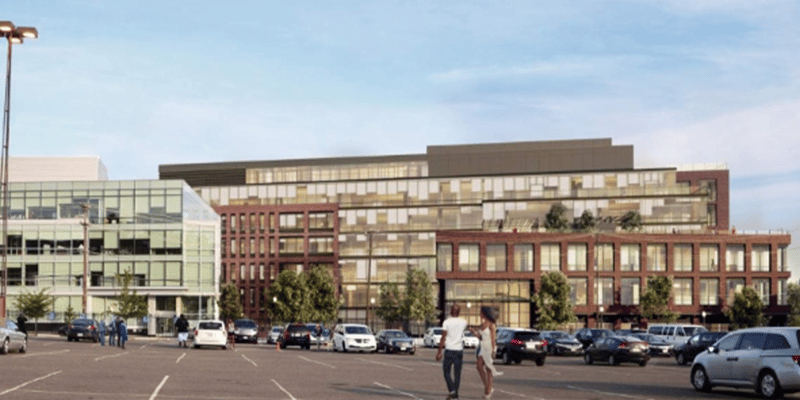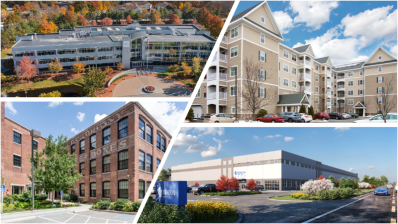Recently, I covered the basics of how to diversify real estate portfolios by pulling the various “levers” of diversification. If you missed that article, I recommend reading it first: How to Build a Diversified Real Estate Portfolio. In this article, we will conduct an exercise that will illustrate just how diversification can be utilized to enhance blended risk-adjusted portfolio returns (for a discussion on risk-adjusted returns, see my recent article, “What are Real Estate Risk-adjusted Returns?”).
As I discussed in my recent article, “Invest like Harvard: The Advantages of Direct Real Estate Investing”, Modern Portfolio Theory recommends investing across multiple asset classes with up to 20% of a well-diversified portfolio invested in hard real estate assets. However, the principle of diversification doesn’t stop at the point of a real estate allocation; it also applies within the real estate allocation itself. Diversifying real estate portfolios helps to hedge against risks. There are a number of ways to diversify real estate portfolios based on geography, property type and investment strategy to name just a few. That diversification allows investors to create a stronger blend of balanced cash flows.
Think of it this way – if you ask real estate investors for their ideal returns profile, the answer is the typical best of both worlds of, “cash flow with equity upside”. While ideal, those types of returns in a single asset are a bit more theoretical than real. High cash flow deals often deliver dependable cash flow at the expense of equity upside while high equity multiple deals often deliver the substantial equity upside at the expense of annual cash flow. Therefore, rather than try to find the nearly fictitious scenario that has both cash flow and upside, you can create the ideal combination through blended portfolio returns where each individual investment plays to its strengths.
To illustrate the point, we will use a hypothetical portfolio. In the following exercise, we will assemble a three property portfolio that demonstrates how a combination of strong cash flow with an attractive overall targeted IRR is achievable. For the sake of simplicity, we will invest a total of $300,000 with $100,000 allocated into three assets with the following profiles:
|
Amount |
Asset Type |
Structure |
Targeted IRR |
Equity / Debt Multiple |
|
$100,000 |
Stabilized Retail Center |
Mezzanine Debt |
10% |
1.5x |
|
$100,000 |
Value-added Office |
Pref Equity |
13.4% |
1.75x |
|
$100,000 |
Multifamily Development |
JV Equity |
22.4% |
2.67x |
Stabilized Retail Center
The first investment is a five-year mezzanine note in a high-occupancy, high-cash flowing shopping center with long-term leases and an anchor tenant. Such an asset provides enough certainty of cash flow that it can withstand the additional leverage of mezzanine debt. A mezzanine debt investment will typically offer a high yield but little to no upside at exit. This investment offers a simple 10% yield, interest-only, paid monthly over the term. While a mezzanine loan is subordinate to a senior loan, since it is still debt, the annual yield must be paid monthly on time by the borrower. If the borrower fails to pay the mezzanine note then it defaults, which then empowers the investor to take corrective actions that can include foreclosing out the subordinate equity position. Due to these factors, the cash flow from the mezzanine loan is the most secure of the three investments in the hypothetical portfolio.
|
Initial Investment |
Year 1 |
Year 2 |
Year 3 |
Year 4 |
Year 5 |
|
|
Investment / Return of Principal |
-$100,000 |
$100,000 |
||||
|
Annual Yield |
$10,000 |
$10,000 |
$10,000 |
$10,000 |
$10,000 |
|
|
Total Cash flow |
-$100,000 |
$10,000 |
$10,000 |
$10,000 |
$10,000 |
$110,000 |
|
Annual YIeld |
10.00% |
10.00% |
10.00% |
10.00% |
10.00% |
|
Avg. Annual Yield |
IRR |
Investment Multiple |
|
10.0% |
10.0% |
1.5x |
Value-Added Office
The second investment is preferred equity in a value-added office building. The business plan of this asset is to increase the net operating income on a well-leased office property through substantial rent bumps on a number of leases that roll over the holding period. The investment offers an 8% preferred return and a small profits participation at exit.
While the investment is positioned similarly in the capital stack to the mezzanine debt investment above (i.e. subordinate to a senior loan but ahead of all common equity) payment of the preferred return or annual yield is not compulsory but subject to available cash flow after debt service to the senior loan. That is why it is called a “preferred return”. Preferred equity is more suitable in this situation over mezzanine debt because the office property has ongoing tenant lease roll that makes the liability of a fixed obligatory monthly payment above the senior mortgage payment too risky for the equity position. Since the preferred equity incurs that additional risk, it deserves a greater return.
|
Initial Investment |
Year 1 |
Year 2 |
Year 3 |
Year 4 |
Year 5 |
|
|
Investment / Return of Principal |
-$100,000 |
$100,000 |
||||
|
Preferred Return |
$8,000 |
$8,000 |
$8,000 |
$8,000 |
$8,000 |
|
|
Profits Participation |
$35,000 |
|||||
|
Total Cash Flow |
-$100,000 |
$8,000 |
$8,000 |
$8,000 |
$8,000 |
$143,000 |
|
Annual YIeld |
8.00% |
8.00% |
8.00% |
8.00% |
8.00% |
|
Avg. Annual Yield |
IRR |
Investment Multiple |
|
8.0% |
13.4% |
1.75x |
Multifamily Development
The third investment is joint venture common equity in a multifamily development situated in an urban location of a secondary market with strong population inflows. This equity investment is subordinate to a construction / mini-permanent loan that is 70% of the total project. Given that a) the investment is ground-up development b) takes first dollar loss risk and c) has no cash flow until the project is constructed and stabilized, it is substantially riskier than the previous two investments. As a result, it should earn the greatest total returns. While high risk, this investment has the potential to deliver an outstanding equity multiple if the business plan is executed as contemplated.
|
Initial Investment |
Year 1 |
Year 2 |
Year 3 |
Year 4 |
Year 5 |
|
|
Investment / Return of Principal |
-$100,000 |
$100,000 |
||||
|
Cash Yield |
$0 |
$1,250 |
$8,500 |
$10,000 |
$12,000 |
|
|
Profits Participation |
$135,000 |
|||||
|
Total Cash Flow |
-$100,000 |
$0 |
$1,250 |
$8,500 |
$10,000 |
$247,000 |
|
Annual Yield |
|
Avg. Annual Yield |
IRR |
Investment Multiple |
|
6.4% |
22.4% |
2.67x |
Blended Returns
If we assemble the three individual investments into a single set of blended portfolio cash flows, this is the result:
|
Initial Investment |
Year 1 |
Year 2 |
Year 3 |
Year 4 |
Year 5 |
|
|
Investment / Return of Principal |
-$300,000 |
$300,000 |
||||
|
Cash Yield |
$18,000 |
$19,250 |
$26,500 |
$28,000 |
$30,000 |
|
|
Profits Participation |
$172,000 |
|||||
|
Total Cash Flow |
-$300,000 |
$18,000 |
$19,250 |
$26,500 |
$28,000 |
$502,000 |
|
Annual Yield |
6.0% |
6.4% |
8.8% |
9.3% |
10.0% |
|
Avg. Annual Yield |
IRR |
Investment Multiple |
|
8.1% |
16.1% |
1.98x |
By diversifying across three investments that have unique asset classes, business plans, structures, and sponsors, we end up with a blended average annual yield of 8.1% where the cash flow is predominantly coming from structures that provide greater certainty of delivering that cash flow (mezzanine debt and preferred equity). In addition to the cash flow, the portfolio also targets a 16.1% IRR where the upside is predominantly coming from an asset class and business plan (multifamily development) that is best suited towards delivering substantial equity upside.
What’s the takeaway for investors?
Investors can use diversification to build a portfolio that offers a blend of both cash flow and upside. By building a portfolio, you also generate a set of targeted cash flows where the individual components of annual cash flow and back-end upside each have a higher probability of meeting or exceeding expectations since you are creating that blend through more focused investments that play to individual investment strengths. In addition, investors are diversifying away from single event types of risks. So, as a portfolio grows from one asset to two, 10 or even 100, that risk continues to diminish and the probability of a full payment becomes more likely. That, as modern portfolio theory describes it, is moving closer to the efficient frontier.
The CrowdStreet Marketplace makes a point to include a variety of different types of offerings across its platform to help investors build portfolio diversity as they continue to increase their real estate investments. CrowdStreet also provides investors with a single dashboard to track and manage those investments. To learn more about online real estate investing and to register for a free commercial investing account, please JOIN NOW.


